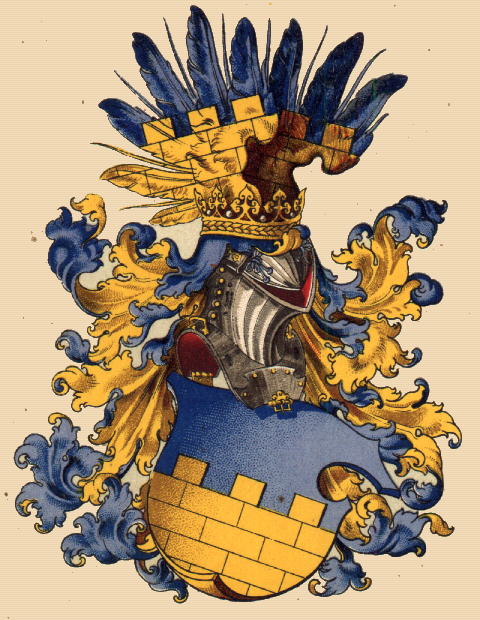County of Ober Lausitz: Difference between revisions
Jump to navigation
Jump to search
Knorrepoes (talk | contribs) (Created page with '{|width="100%" style="color:black; background-color:#ffffcc;" |width="15%"|50 px|left |width="70%" align="center" |'''Heraldry of the World<br>Civic heraldry…') |
Knorrepoes (talk | contribs) m (Text replace - "'''Origin/meaning :'''<br>" to "====Origin/meaning====") |
||
| Line 9: | Line 9: | ||
[[FIle:o-lausit.ahe.jpg|center]] | [[FIle:o-lausit.ahe.jpg|center]] | ||
====Origin/meaning==== | |||
The County Ober Lausitz (now in Saxony, Germany) was created in the territory of Bautzen, and became a possession of the Kings of Bohemia in 1329. In 1377 the name was changed into Duchy of Görlitz. On May 30, 1635 Ober and Nieder Lausitz were sold to the Dukes of Saxony. The Kings of Bohemia, and their successors, the Austrian Emperors, however, kept using the title of Markgrave of Ober Lausitz. | The County Ober Lausitz (now in Saxony, Germany) was created in the territory of Bautzen, and became a possession of the Kings of Bohemia in 1329. In 1377 the name was changed into Duchy of Görlitz. On May 30, 1635 Ober and Nieder Lausitz were sold to the Dukes of Saxony. The Kings of Bohemia, and their successors, the Austrian Emperors, however, kept using the title of Markgrave of Ober Lausitz. | ||
Revision as of 19:21, 1 April 2012
| Heraldry of the World Civic heraldry of the Austro-Hungarian Empire |
COUNTY OF OBER LAUSITZ (Upper Lusatia)
Origin/meaning
The County Ober Lausitz (now in Saxony, Germany) was created in the territory of Bautzen, and became a possession of the Kings of Bohemia in 1329. In 1377 the name was changed into Duchy of Görlitz. On May 30, 1635 Ober and Nieder Lausitz were sold to the Dukes of Saxony. The Kings of Bohemia, and their successors, the Austrian Emperors, however, kept using the title of Markgrave of Ober Lausitz.
The arms are identical to the arms of the city of Bautzen, which still uses the arms today. The arms are known as such since the 14th century.
Literature : Ströhl, 1890
